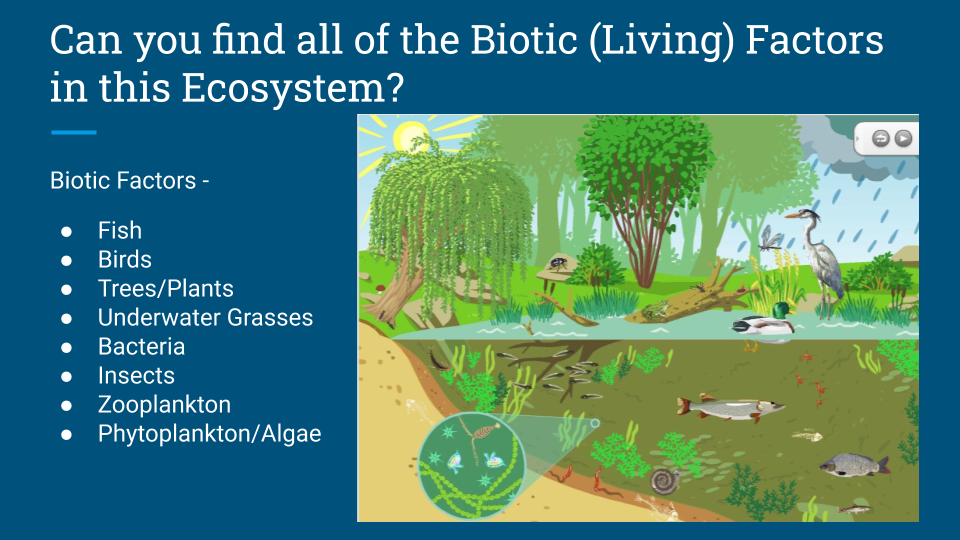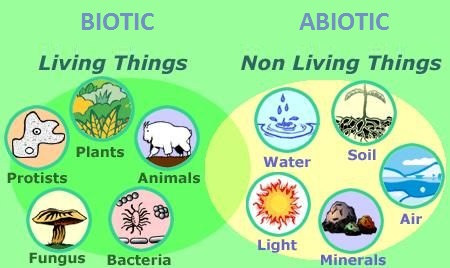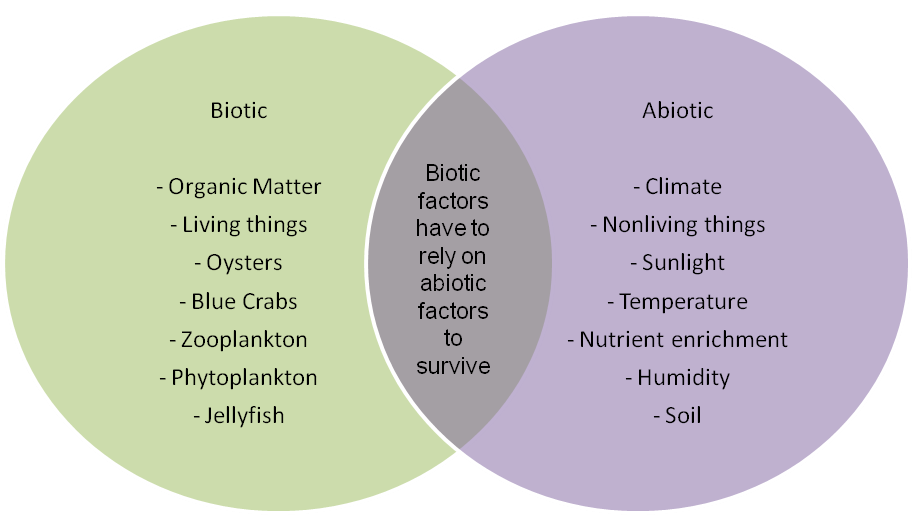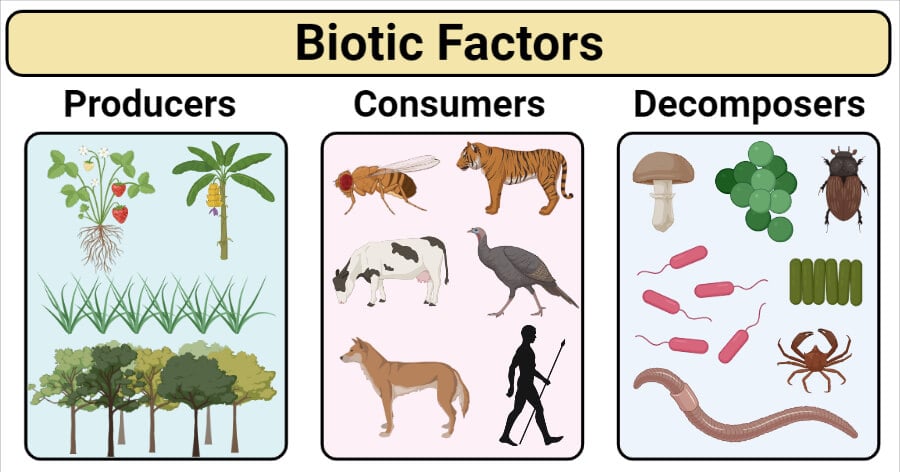Topic ecosystem abiotic biotic: Discover the fascinating world of ecosystems, where abiotic and biotic elements intertwine to create the foundation for life on Earth.
Table of Content
- How are biotic and abiotic factors related in an ecosystem?
- Understanding Ecosystems: Biotic and Abiotic Factors
- The Role of Abiotic Factors in Ecosystems
- Examples of Abiotic Factors and Their Impact
- The Role of Biotic Factors in Ecosystems
- Examples of Biotic Factors and Their Interactions
- YOUTUBE: Biotic and Abiotic Factors in an Ecosystem
- How Abiotic and Biotic Factors Interact
- The Importance of Balance Between Abiotic and Biotic Factors
- Case Studies: Ecosystems Around the World
- Human Impact on Abiotic and Biotic Factors
- Conservation Efforts to Protect Ecosystems
How are biotic and abiotic factors related in an ecosystem?
Biotic and abiotic factors are interrelated in an ecosystem, working together to create a balanced and sustainable environment for living organisms. This relationship can be explained as follows:
1. Definition and Examples:
- Biotic factors refer to living organisms that exist within an ecosystem, including plants, animals, fungi, bacteria, and protists.
- Abiotic factors, on the other hand, encompass the non-living components of the ecosystem, such as water, soil, air, sunlight, temperature, and nutrients.
- For example, in a forest ecosystem, the trees, birds, and deer represent the biotic factors, while the soil, water, sunlight, and temperature are the abiotic factors.
2. Interdependence:
- Biotic and abiotic factors are interconnected and rely on each other for survival.
- Living organisms (biotic factors) depend on the non-living components (abiotic factors) for their basic needs, such as water, nutrients, and energy.
- For instance, plants require sunlight for photosynthesis, animals need water to drink, and microorganisms rely on specific temperature ranges to thrive.
3. Influence on Population and Distribution:
- Biotic and abiotic factors influence the population size and distribution of species within an ecosystem.
- Abiotic factors provide the environmental conditions that determine which organisms can survive and flourish in a particular area.
- For example, a desert ecosystem\'s high temperatures and scarcity of water make it suitable for cacti and certain reptiles, but inhospitable for many other organisms.
- Biotic factors, such as competition for resources and predation, also impact population dynamics within an ecosystem.
4. Adaptations:
- Organisms have evolved specific adaptations to cope with the abiotic factors present in their habitats.
- These adaptations can be physiological, morphological, or behavioral in nature.
- For instance, desert plants have developed drought-resistant features like spines and succulent stems, while animals have adapted to conserve water and tolerate extreme temperatures.
5. Ecosystem Stability:
- The balance between biotic and abiotic factors is crucial for the overall stability and functioning of an ecosystem.
- Disruptions or changes in abiotic factors can directly impact the survival and interactions of biotic components.
- For example, alterations in rainfall patterns can affect plant growth, which in turn affects herbivores, predators, and the entire food web.
In conclusion, the relationship between biotic and abiotic factors in an ecosystem is intricately connected and essential for the sustainability and diversity of life within that ecosystem.
READ MORE:
Understanding Ecosystems: Biotic and Abiotic Factors
Ecosystems are dynamic environments where living organisms (biotic factors) interact with non-living elements (abiotic factors) to create a balanced system. These interactions are fundamental for the survival and development of ecosystems worldwide.
- Biotic Factors: These include all living components in an ecosystem, such as plants, animals, fungi, and microorganisms. Biotic factors are responsible for food production, nutrient cycling, and creating habitats.
- Abiotic Factors: These are the non-living elements that influence the ecosystem, including sunlight, temperature, soil, water, and air. Abiotic factors determine the types of biotic factors that can thrive in an ecosystem.
The relationship between abiotic and biotic factors is symbiotic and essential for ecosystem productivity. For instance, sunlight (an abiotic factor) drives photosynthesis in plants (a biotic factor), which in turn produce oxygen and food that support other life forms.
- Impact of Temperature: Temperature regulates the metabolic rates of organisms and the chemical reactions in the environment.
- Water"s Role: Water is crucial for life, affecting organisms" growth and regulating ecosystems through precipitation and water cycles.
- Soil Composition: Soil supports plant life, which in turn supports herbivores and the larger food web. Its composition affects the types of plants that can grow.
Understanding the intricate balance between abiotic and biotic factors is key to conserving ecosystems and managing natural resources effectively. This balance ensures biodiversity, supports life, and maintains ecological integrity.

The Role of Abiotic Factors in Ecosystems
Abiotic factors are the non-living components of an ecosystem that have a significant impact on the environment and the organisms within it. These factors include sunlight, temperature, water, air, soil, and nutrients, each playing a crucial role in shaping the ecosystem.
- Sunlight is essential for photosynthesis, driving the energy flow in ecosystems.
- Temperature influences the distribution and activities of living organisms.
- Water is a key component for life, affecting species distribution and ecosystem dynamics.
- Air provides essential gases such as oxygen and carbon dioxide for biological processes.
- Soil types determine the kinds of plant life that can thrive, influencing the entire food web.
- Nutrients in the soil are vital for plant growth, which in turn supports higher trophic levels.
Understanding the role of these abiotic factors is fundamental to studying ecosystems, as they directly affect the survival and distribution of biotic elements, thereby shaping the ecosystem"s structure and function.
Examples of Abiotic Factors and Their Impact
Abiotic factors are the non-living components that shape ecosystems. Their influence is profound, affecting everything from the distribution of species to the efficiency of energy flow. Here are some key examples:
- Temperature: Dictates the types of organisms that can survive in an environment. Extreme temperatures limit the diversity of life.
- Water: Essential for life, its availability can determine the structure of an ecosystem. Droughts or floods significantly impact the living conditions.
- Light: Solar energy drives photosynthesis in plants, influencing growth patterns and the types of vegetation that dominate an area.
- Soil: Its composition affects the types of plants that can grow, subsequently influencing the animals that can inhabit an area.
- Wind: Can alter the physical environment, affecting seed dispersal and erosion, thus shaping habitats over time.
- pH Levels: The acidity or alkalinity of soil and water can limit the species of plants and animals that thrive in an ecosystem.
- Salinity: Affects the biodiversity of aquatic ecosystems, with different species adapted to varying levels of salt concentration.
These abiotic factors interact in complex ways, collectively influencing the resilience, productivity, and biodiversity of ecosystems.

The Role of Biotic Factors in Ecosystems
Biotic factors represent the living components of an ecosystem that influence its structure and function. These include plants, animals, fungi, and microorganisms. Each plays a unique role in maintaining the health and balance of the ecosystem.
- Producers (Autotrophs): Plants and algae serve as the foundation of most ecosystems, converting sunlight into energy through photosynthesis, which supports the food web.
- Consumers (Heterotrophs): Animals that consume other organisms for energy, divided into herbivores, carnivores, and omnivores.
- Decomposers: Fungi and bacteria break down dead organisms, recycling essential nutrients back into the environment, thus closing the nutrient cycle.
- Pollinators: Insects, birds, and bats that facilitate plant reproduction by transferring pollen, ensuring genetic diversity and plant population stability.
The interaction between these biotic components creates complex food webs and ecological relationships that determine the energy flow and nutrient cycling within ecosystems. These interactions are crucial for ecosystem resilience, productivity, and biodiversity.
Examples of Biotic Factors and Their Interactions
Biotic factors, the living components of an ecosystem, significantly influence its structure and dynamics through a variety of interactions. These interactions are vital for the stability and sustainability of ecosystems.
- Predation: This interaction involves a predator feeding on its prey, influencing population control and species diversity.
- Competition: Species compete for limited resources like food, space, and mates, which can lead to the adaptation and evolution of species.
- Mutualism: A cooperative interaction where both species benefit, such as bees pollinating flowers while feeding on their nectar.
- Parasitism: Parasites live on or in a host organism, benefiting at the host"s expense without providing any benefits in return.
- Decomposition: Decomposers like fungi and bacteria break down dead organic matter, returning nutrients to the soil, which are then used by plants.
These interactions not only regulate population sizes but also contribute to the energy flow and nutrient cycling within ecosystems. Understanding these relationships is crucial for conservation efforts and managing natural resources.

Biotic and Abiotic Factors in an Ecosystem
\"Discover the key factors that contribute to success in this fascinating video! Uncover the secrets to achieving your goals and watch your life transform for the better.\"
Biotic and Abiotic Factors Ecosystems
\"Dive into the stunning world of ecosystems and witness the delicate balance that exists between all living organisms. Explore the wonders of nature and gain a deeper appreciation for the interconnectedness of our planet.\"
How Abiotic and Biotic Factors Interact
The interaction between abiotic and biotic factors is fundamental to the functioning of ecosystems. These interactions shape the habitat, influence biodiversity, and govern the flow of energy and cycling of nutrients.
- Climate and Temperature: Abiotic factors like climate and temperature can dictate the types of plants and animals that thrive in an ecosystem. Warmer temperatures may increase plant growth rates, affecting herbivore populations.
- Soil and Water Quality: The chemical composition of soil and water affects the plants" ability to grow, which in turn supports the animals that feed on those plants.
- Light: Sunlight is essential for photosynthesis, the process by which plants produce food. This energy then supports the entire food web.
- Interactions Between Predators and Prey: Predator-prey relationships are influenced by abiotic factors like terrain and vegetation cover, which can affect hunting success and prey availability.
- Nutrient Availability: The decomposition of organic matter by fungi and bacteria (biotic factors) enriches the soil with nutrients, making it more fertile for plant growth (abiotic factor).
These interactions are not isolated; they are interconnected in complex ways that ensure ecosystem stability and resilience. Understanding these dynamics is crucial for conservation efforts and managing natural resources sustainably.
The Importance of Balance Between Abiotic and Biotic Factors
The equilibrium between abiotic and biotic factors in ecosystems is crucial for sustaining life. This balance affects biodiversity, productivity, and the overall health of the ecosystem.
- Climate Stability: Abiotic factors like temperature and rainfall influence the types of species that can thrive in an ecosystem. A stable climate supports a diverse range of life forms.
- Soil Fertility: Soil composition, an abiotic factor, affects plant growth. In turn, plants support various life forms, influencing biodiversity.
- Water Quality: The purity of water, an abiotic component, impacts aquatic life and those dependent on it. Clean water supports healthy biotic communities.
- Food Web Dynamics: The interaction between producers, consumers, and decomposers (biotic factors) relies heavily on abiotic conditions like sunlight and nutrient availability.
Maintaining this balance is vital for ecosystem resilience against disturbances and for providing ecosystem services essential to human survival, such as clean air, water, and fertile land for agriculture.

Case Studies: Ecosystems Around the World
This section explores various ecosystems around the globe, highlighting the intricate balance and interaction between abiotic and biotic factors. These case studies underscore the diversity of ecosystems, their unique challenges, and the efforts being made to preserve them.
- The Amazon Rainforest, South America: The world"s largest tropical rainforest, showcasing the critical role of temperature and precipitation as abiotic factors. The dense canopy and diverse plant species represent biotic components that support an immense variety of wildlife. Deforestation poses a significant threat, affecting both abiotic and biotic factors.
- The Great Barrier Reef, Australia: An example of a marine ecosystem, where water temperature and salinity are key abiotic factors. The reef is home to a multitude of organisms, from microscopic algae to large marine mammals. Coral bleaching, caused by rising sea temperatures, highlights the sensitivity of biotic factors to abiotic changes.
- The Sahara Desert, Africa: Illustrates the impact of extreme abiotic factors, such as temperature and availability of water, on the distribution of life. Biotic factors include specialized plants and animals adapted to arid conditions. Human activities, such as water extraction and land use change, further stress this fragile ecosystem.
- The Arctic Tundra, Arctic Circle: Characterized by cold temperatures and permafrost, with a short growing season. The biotic community, including mosses, lichens, and migratory bird species, is adapted to these harsh conditions. Climate change is altering abiotic factors here faster than in most other ecosystems, affecting the delicate balance of biotic life.
- The Serengeti Plains, Africa: Known for its vast grasslands and the annual migration of millions of wildebeest and other herbivores, a phenomenon driven by the seasonal rains (an abiotic factor). Predation and symbiotic relationships exemplify the complex interactions among biotic factors. Conservation efforts aim to balance human needs with ecosystem protection.
Each of these case studies demonstrates the importance of understanding and preserving the delicate balance between abiotic and biotic factors in ecosystems. Through ongoing research and conservation efforts, we can hope to maintain the biodiversity and ecological services these ecosystems provide.
Human Impact on Abiotic and Biotic Factors
Humans have a profound impact on both abiotic and biotic factors within ecosystems around the globe. This section explores the various ways human activities influence these components and the interconnectedness of life on Earth.
Effects on Abiotic Factors
- Climate Change: Emissions of greenhouse gases from burning fossil fuels have led to changes in temperature and weather patterns, affecting ecosystems worldwide.
- Pollution: Air, water, and soil pollution from industrial, agricultural, and urban sources have altered the natural balance of abiotic components, impacting water quality, air purity, and soil health.
- Land Use Change: Deforestation, urbanization, and agriculture transform landscapes, changing local climates and altering the availability of water and nutrients in the soil.
Effects on Biotic Factors
- Loss of Biodiversity: Habitat destruction, overexploitation of species, and introduction of invasive species reduce biodiversity and disrupt ecosystem services.
- Altered Food Webs: Changes in abiotic factors can lead to shifts in species populations and distributions, altering food webs and species interactions.
- Disease Spread: Human activities can facilitate the spread of diseases among plants and animals, affecting species health and ecosystem stability.
Interactions Between Abiotic and Biotic Factors
Human impacts on abiotic factors invariably affect biotic factors due to the interconnectedness of ecosystems. For example, climate change not only alters habitats but also affects the distribution of species, leading to changes in biodiversity and ecosystem functions. Similarly, pollution can reduce water and air quality, affecting both plant and animal health.
Positive Actions for Mitigation and Adaptation
- Conservation Efforts: Protecting natural habitats and restoring ecosystems can help preserve biodiversity and maintain the balance between abiotic and biotic factors.
- Sustainable Practices: Adopting sustainable agricultural, industrial, and urban practices reduces pollution and conserves resources, mitigating human impact on ecosystems.
- Climate Action: Efforts to reduce greenhouse gas emissions and promote renewable energy sources are crucial in combating climate change and protecting ecosystems.
Understanding and mitigating human impact on abiotic and biotic factors is essential for preserving the health and diversity of ecosystems around the world. Through education, policy, and individual actions, we can work towards a more sustainable and balanced relationship with the natural world.
READ MORE:
Conservation Efforts to Protect Ecosystems
Protecting ecosystems is vital for maintaining biodiversity and the health of our planet. Conservation efforts worldwide aim to preserve the delicate balance between abiotic and biotic factors, ensuring the survival of countless species and the ecosystems they inhabit. These initiatives take various forms, from local community projects to global agreements.
- Protected Areas and Reserves: Establishing national parks, wildlife reserves, and marine protected areas to safeguard habitats from human encroachment and exploitation.
- Restoration Projects: Rehabilitating degraded ecosystems, such as reforesting areas that have been logged or restoring wetlands that have been drained for agriculture, to restore biodiversity and ecosystem services.
- Legislation and Policies: Enacting laws and regulations to reduce pollution, limit industrial development in sensitive areas, and control the introduction of invasive species that can disrupt local ecosystems.
- Community Engagement and Education: Encouraging local communities to participate in conservation efforts through education and by promoting sustainable practices that benefit both people and the environment.
- International Agreements: Participating in global treaties, such as the Convention on Biological Diversity (CBD) and the Paris Agreement on climate change, to address environmental issues that cross national borders.
- Wildlife Conservation: Implementing measures to protect endangered species through breeding programs, habitat protection, and anti-poaching efforts.
- Climate Change Mitigation: Reducing greenhouse gas emissions and promoting renewable energy sources to combat climate change, which significantly impacts ecosystems worldwide.
- Research and Monitoring: Supporting scientific research to monitor ecosystems and biodiversity, providing data essential for informed conservation decisions and adaptive management strategies.
Through these and other efforts, conservationists aim to protect ecosystems by preserving their abiotic components, such as water and climate, and their biotic components, including plants, animals, and microorganisms. By understanding and mitigating human impacts, we can ensure the health and resilience of ecosystems around the world for future generations.
Exploring the intricate balance between abiotic and biotic factors reveals the beauty and complexity of ecosystems worldwide. Join us in safeguarding these vital networks, ensuring a sustainable future for our planet"s diverse habitats.






